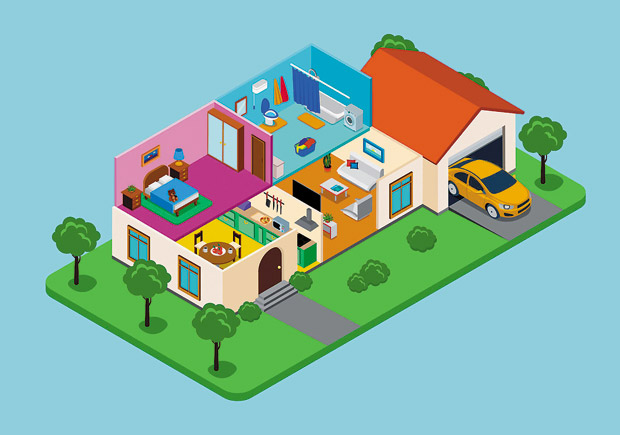QUESTION OF THE WEEK: I remember the days when families had more time together, and each night we sat around the dinner table and talked about our day. Now, I see my children and grandchildren running separate ways, and I feel like there is a “disconnect.” On top of it, they own so many things that they never use. I wonder how this lifestyle ties into feng shui (if it does at all).
What you mention does tie into feng shui, as feng shui is not just about the position and placement of things. At its core, it also is about the foundation and structure of a home.
New homes match current lifestyle
Over the years, I have noticed that the structure of homes has changed. New homes are being built to match the lifestyles that you mention you see in your children’s family, providing minimal space for family gatherings. This often encourages the family to live the life that the structure of the home dictates.
Older homes — and even larger condominiums — have dining rooms, a place for the family to gather around a table and eat dinner together. Newer homes have done away with an actual dining room, substituting a small area of the family room for dining, an indication of how seldom families eat together these days, or a kitchen island for “eat-and-go” convenience. The extra space once dedicated to a dining room is now used as a “home office” or a “storage area,” taking the essence of “family” out of the equation of the home.
Children are physically distant
Some of the newer and larger homes also create a “disconnect” between parents and children, in that the children’s rooms are on the opposite side of the home or on different levels. These homes are promoted as an advantage for greater privacy for the parents, but they also symbolically move the children away from the parents, creating the “disconnect” that you mention.
In older homes, the smaller bedrooms are near the parents’ room, helping to keep them and their children energetically close.
The modern portrait of a home
A large study done a few years ago at UCLA on homes in Los Angeles painted this picture of the modern-day home: stacks and stacks of clutter, virtually unused master suites, entire walls devoted to displays of dolls, Beanie Babies or other fads and garages so packed with household overflow that cars have to be parked on the streets.
Here in Hawaii
While this study was done on homes in Los Angeles and may not seem to accurately describe what we see in homes in Hawaii, I have seen correlations first-hand. Becoming conscious of these patterns will help you examine your house, your possessions and the way you use your time. Awareness is the first step toward building a more cohesive family structure.
Do you have a question for Alice? If so, send it to alice@yourhappinessu.com. Visit YourHappinessU.com
